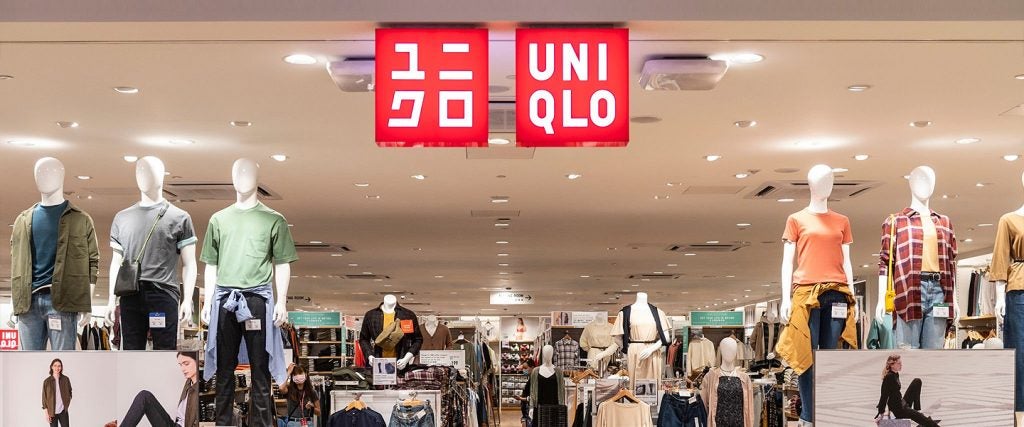When Vox’s Rebecca Jennings wrote about the Male Fashion Advice subreddit in 2018, there was one brand that popped up over and over again — Uniqlo.
“Uniqlo is a bit of a meme because it always gets recommended,” Walker Livingston, a moderator of the subreddit, told her. Another mod explained that it’s “number 1,” because “it’s affordable, it fits well, and I think the Japanese thing helps.” Per the MFA’s own crowdsourced brand review in 2019, Uniqlo’s resounding popularity came down to a few basic principles: Their Supima T-shirts felt great. Their ‘techwear’ fabrics at a budget price point were highly utilitarian. Their sizing was on-point. And their clothes were refreshingly label-less.
“Uniqlo isn’t in the business of chasing trends,” Gillian B. White wrote in her 2019 Uniqlo story for The Atlantic, “Why Urban Millennials Love Uniqlo.” “Its staples — versatile black pants, reliable oxfords, crisp cotton socks — are available month after month, year after year.”
That millennial men suddenly started to love Uniqlo around the same time was no accident. Back in 2015, Business Insider reported the Hiroshima-based brand’s goal was to target men specifically. By cornering the market on men’s basics that allowed guys to mix and match easily, Uniqlo helped usher in the unofficial Fashion for Dummies guidebook. And ever since the brand’s arrival to the U.S. in 2005, it’s been commonly cited as a go-to in the MFA’s “Basic Bastard Inspiration Albums.” Even subscribers of the Buy It For Life subreddit, who are usually contemptuous toward fast-fashion brands, were quick to praise Uniqlo as “super comfortable and great durability compared to the competition.”
But while Uniqlo is now the most valuable clothing company in the world, it seems some of its earliest and most fervent supporters are turning their back on the brand. I first noticed this a few weeks ago while researching the recent fandom around the ostensibly new and improved Abercrombie & Fitch. Abercrombie converts suggested that part of their shift back toward the once-bankrupt mall brand was that Uniqlo just wasn’t what it used to be. “Okay, we all know how Abercrombie went to shit, first with its design then with its quality,” one MFA subscriber wrote. “Through it all, only their jeans were a redeeming factor. I wore Uniqlo for the past five years and was going to revamp my closet with Uniqlo until I realized their stuff went to shit. I recently gave some Abercrombie clearance stuff another try and I am very surprised at what I got.”
Speaking of shit, another noted that Uniqlo’s beloved, super soft Supima T-shirt “feels like shit now,” complaining that it’s “really thinner compared to the ones I bought about 18 months ago.” He felt the quality of the brand had cratered so much that he didn’t even buy anything during his most recent trip to his local Uniqlo outpost. A fellow commenter responded, “Anecdotally, every T-shirt I bought from [Uniqlo] last summer got a discoloration around the collar within a couple of months. I’d say it was because of something I was putting on my body, but it didn’t happen to any of my other shirts.”
Quality concerns aside, in many ways, this is just the nature of things. In 2018, for example, Insider reported that J.Crew stans had begun to question that mall brand’s worthiness. “J. Crew is turning into H&M,” one opined on the brand’s Facebook page. “Generic, cheap and wannabe trendy. Quality has slipped a lot.” Similarly, after J.Crew’s sales peaked in 2015, there were complaints of sweaters pilling, poor fabrics and weak seams. Basically, customers claimed that J.Crew had cut corners to compete with the Zaras of the world — something others swore happened to Banana Republic as well.
But the turning tide against Uniqlo is likely as much about the life-cycle of popularity as anything else — something is underrated and great until it’s overrated and sucks. “A lot of these people complaining about Uniqlo’s diminishing quality started out their fashion journey going to Uniqlo because they were told it was good quality for the price and ended up agreeing with that because it was better than the $5 Gildan T-shirts they were used to wearing,” another redditor argues.
The thing is, he continues, once those same people began to care more about their style and started buying clothing that were actually of higher quality, “they realized how cheap the stuff at Uniqlo is when they went back to it, but just assumed that it was because Uniqlo got worse.” The more likely reality, of course, was that their standards had changed — not necessarily Uniqlo’s, a harsh truth that not even a Supima T-shirt could soften.
Or as one MFA subscriber put it much more pointedly, “Going to go out on a limb and guess that Uniqlo is exactly the same as it was when I first tried it nearly a decade ago.”

